Delicious, healthy Singapore Noodles are made with vermicelli rice noodles, curry powder, vegetables, and your choice of chicken, tofu, eggs, or shrimp! Vegetarian. Video.
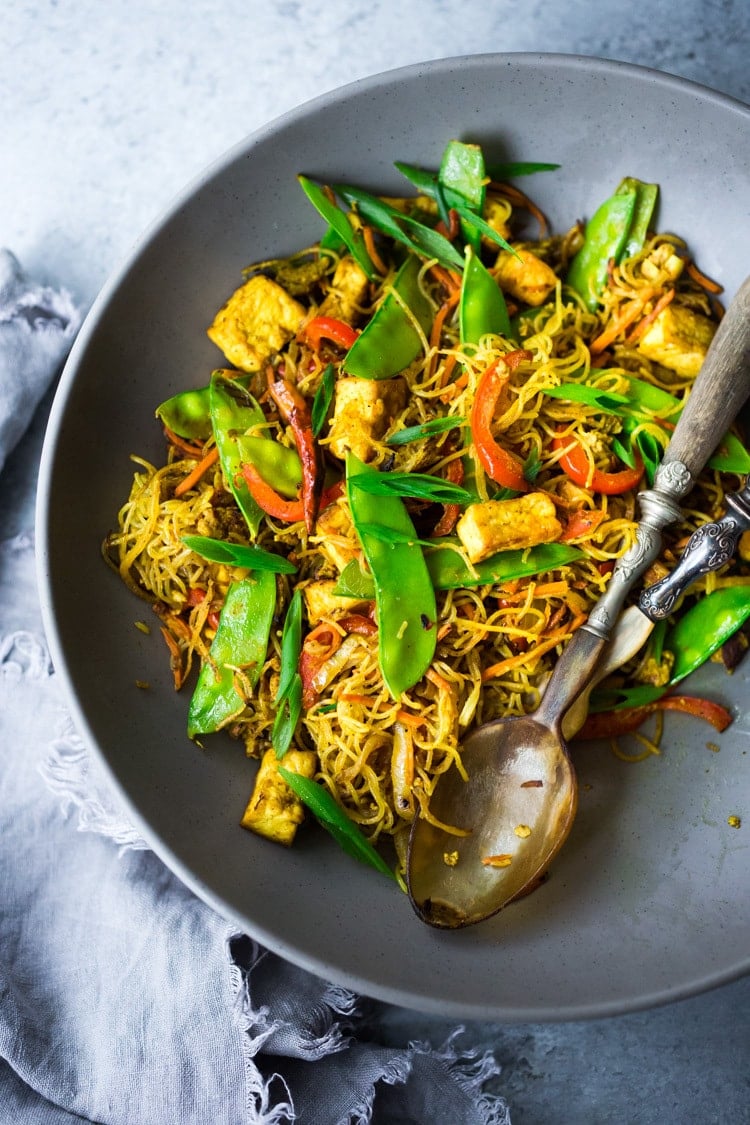
She said she usually cried at least once each day not because she was sad, but because the world was so beautiful & life was so short.
Singapore noodles (or Singapore Mei fun) have a distinct savory taste with a hint of spiciness. In this recipe, vermicelli noodles are stir-fried in a wok with vegetables and seasoned with madras curry powder. You can add chicken, tofu, scrambled eggs, or shrimp! We prefer this dish on the spicy side, but feel free to keep it mild for younger palates. It is a dry-style Chinese noodle dish rather than a saucy one.
Singapore Noodles, contrary to how they sound, actually originate from China and are most often found in American Chinese restaurants rather than in Singapore! Love Asain noodle dishes? Try our popular Pad Thai and Kimchi Noodles!
Table of Contents
Singapore Noodles Video
INGREDIENTS in Singapore Noodles
- Protein: Choose from tofu, chicken, or whole raw shrimp -keep it vegan, vegetarian, or add meat.
- Vermicelli rice noodles: These thin vermicelli noodles are made of rice (yes, they are gluten-free!) the base of the dish, and provide a delicate and soft texture. They are commonly used in Asian cuisine and can be found in most grocery stores.
- Veggies: The recipe calls for onion, carrots, red bell pepper, and snow peas as the main vegetables. Feel free to substitute them with other vegetables like green beans, baby bok choy, shredded cabbage, or bean sprouts based on your preferences or what you have on hand.
- Eggs: Offer a subtle richness and help bind the ingredients together, creating a cohesive dish. Leave these out if vegan.
- Red chili peppers: These peppers can add a spicy kick to the noodles. If you prefer a milder version, you can substitute them with chili flakes
- Madras curry powder: This spice blend provides the signature flavor of Singapore Noodles. It adds a warm and slightly spicy taste to the dish. If you don’t have Madras curry powder, you can use yellow curry powder as a substitute.
- Shaoxing wine: a type of Chinese cooking wine that adds depth and complexity to the dish. If you don’t have it, you can substitute it with Chinese cooking wine, mirin, or white wine.
- Sesame oil: Sesame oil is used for its nutty aroma and distinctive flavor. It enhances the overall taste of the noodles and adds a subtle richness.
- Soy sauce: Soy sauce brings a salty and savory flavor to the dish. If you follow a gluten-free diet, you can use gluten-free soy sauce or a suitable alternative like Bragg’s Liquid Aminos.
- Fish sauce: An umami-rich ingredient that contributes to the authentic flavor of Singapore Noodles. If you prefer a vegetarian or vegan option, you can substitute it with vegan fish sauce
- Sugar: A small amount of sugar or honey is added to balance out the flavors and add a touch of sweetness. If you prefer, you can use other sweeteners of your choice, such as maple syrup or agave nectar.
See the recipe card below for a full list of ingredients and measurements.
How To Make Singapore Noodles
Step 1. Cook the vermicelli noodles according to package instructions.
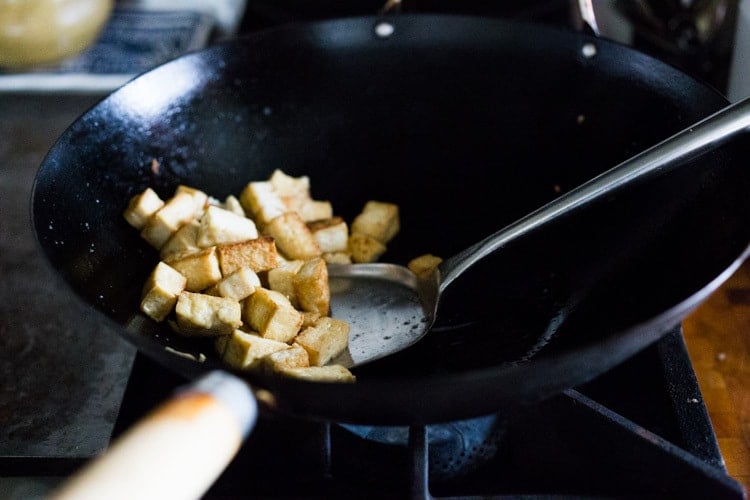
Step 2. Stir fry the protein; in this case, we are using tofu, seasoning it with salt and pepper. You can also add chicken or shrimp! Set the crispy tofu aside.
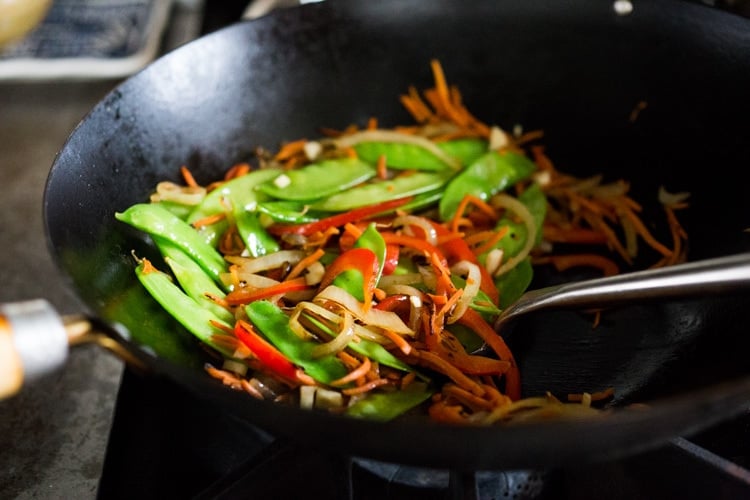
Step 3. Stir-fry the veggies, starting with the sliced onion. Add thin strips of bell pepper, carrots, garlic, and snow peas. Other veggies work well too, like cabbage, bok choy, green beans, or mushrooms. A great way to clean out your veggie drawer.
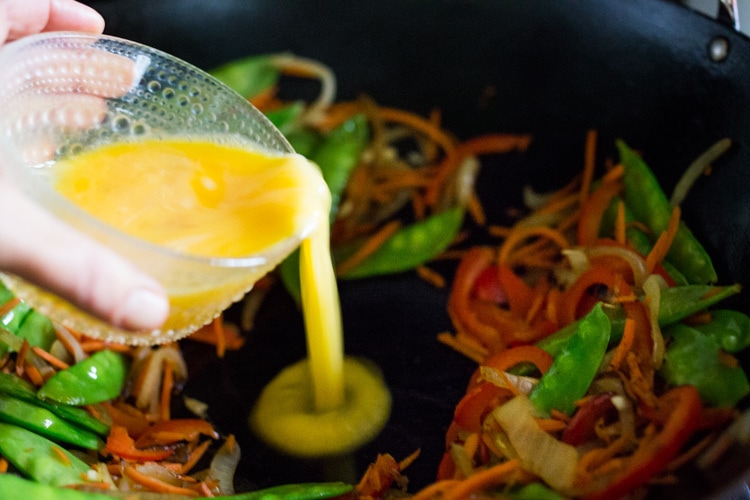
Step 4. Make a well in the center of the veggies and basically, scramble the eggs. Set the veggies and eggs aside.
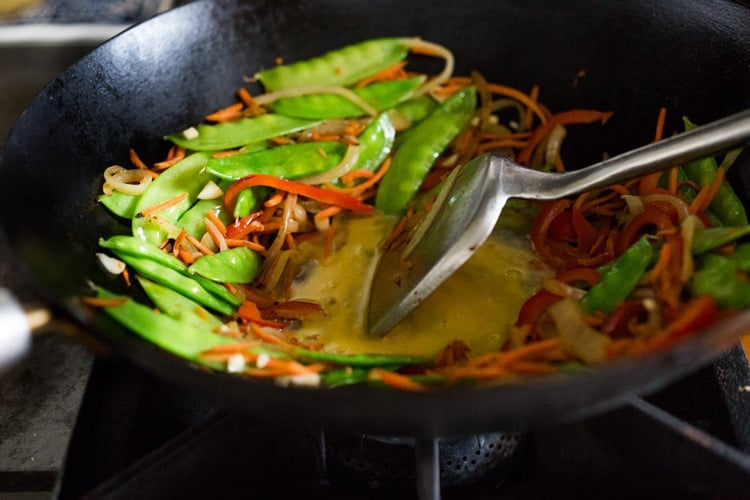
Chef’s Tip: After you cook and drain the vermicelli noodles cut them into thirds so they are easier to manage in the wok. This will help tremendously!
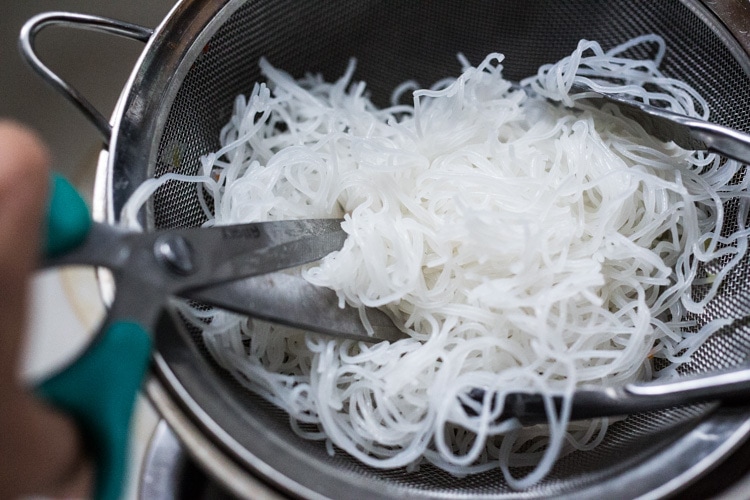
Step 5. Stir-fry the cooked vermicelli rice noodles by giving them a quick stir-fry, add a few dried red chilies for heat if you like, then add the veggies and tofu back into the pan.
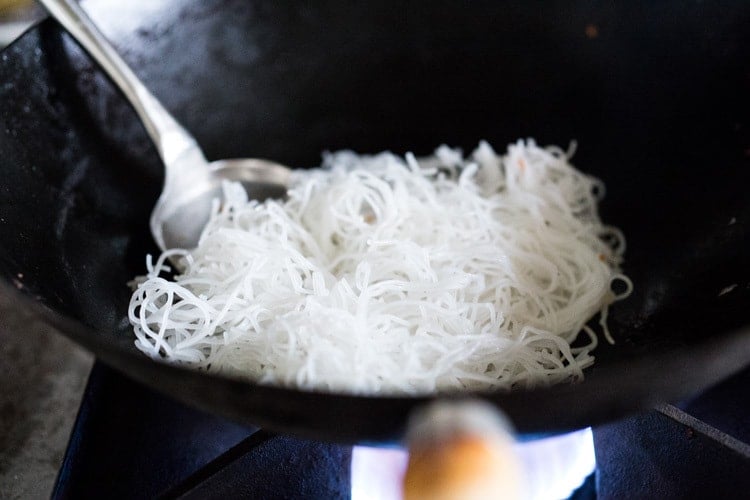
Step 6. Sprinkle with the curry powder, the Singapore Noodle Sauce and toss everything well to incorporate.
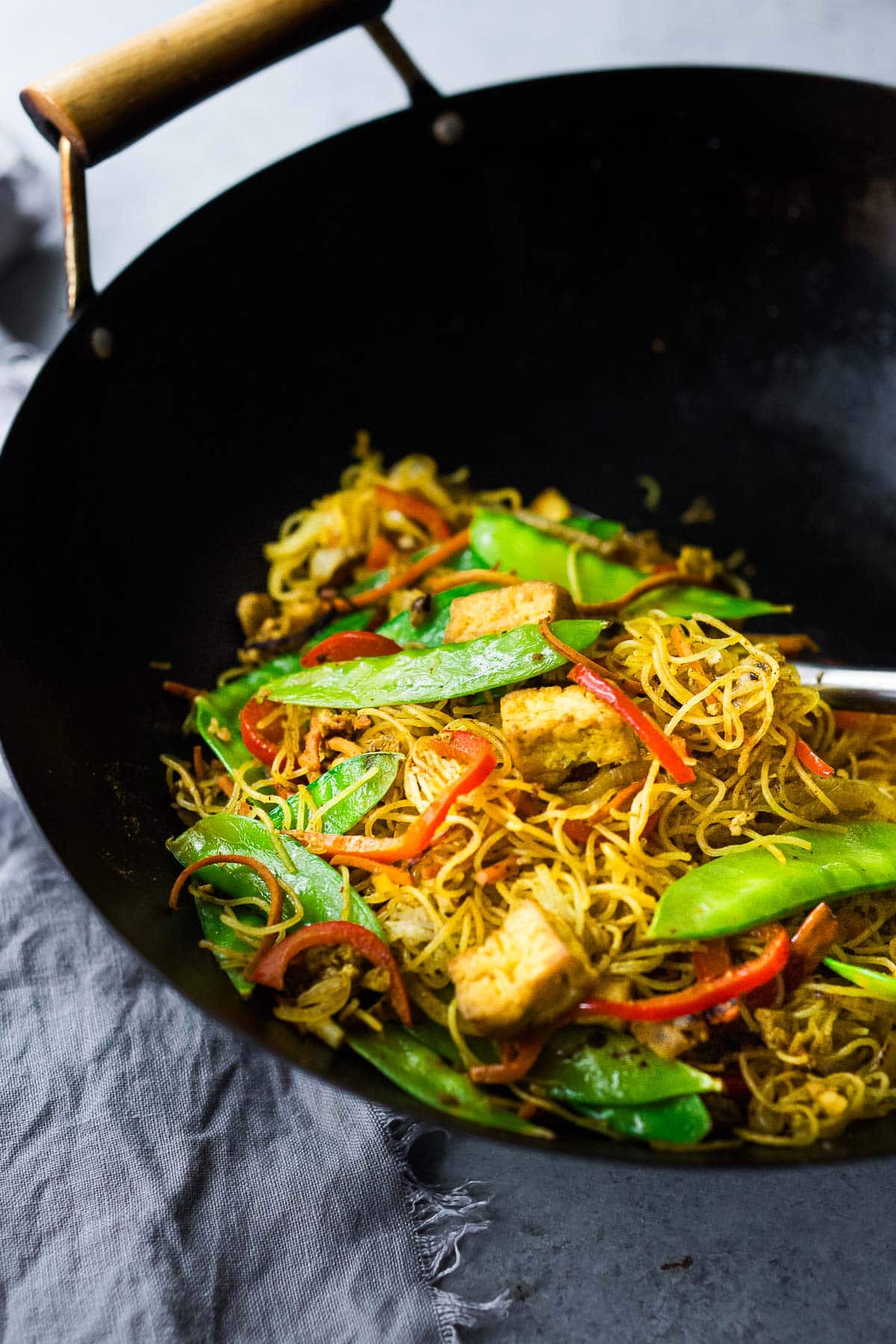
Serving Suggestions
Serve immediately with chopsticks, scallions and hot chili paste or chili flakes for those who want extra heat.
Storage and Reheating
Singapore noodles will keep up to 4 days in the fridge in an airtight container and can be reheated in the microwave or in a nonstick skillet on the stovetop.
FAQS
Contrary to popular belief, Singapore noodles are not actually from Singapore. They are a popular dish in many Chinese restaurants around the world, but they do not originate from Singapore itself.
Why they’re named Singapore noodles is still a bit unclear, but it is believed that a Cantonese chef in China created these noodles as a way to showcase how multicultural Cantonese cooking could be by adding curry powder.
Traditional Singapore noodles are not gluten-free since they typically use wheat-based rice noodles. However, you can make gluten-free Singapore noodles by choosing rice noodles explicitly marked as gluten-free or by using alternative gluten-free noodles like rice vermicelli or glass noodles.
Singapore noodles are loaded up with healthy veggies that are very quickly stir-fried while still retaining their fresh, crunchy texture, nutrients, and vibrancy.
More favorite Noodle Dishes
Hope you enjoy this recipe for Singapore Noodles – a dry-style, stir-fried vermicelli noodle dish, hailing from China, with veggies, tofu and the signature ingredient, madras curry powder! Yum! The leftovers taste amazing too!
Love this recipe? Please let us know in the comments and leave a 5-star ⭐️⭐️⭐️⭐️⭐️ rating below the recipe card.
Print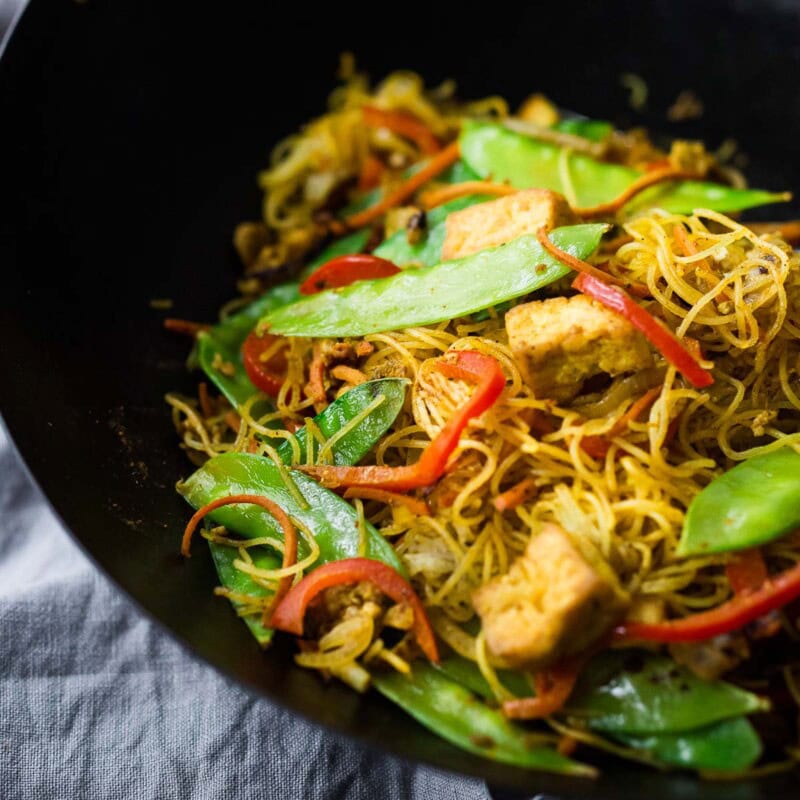
Singapore Noodles Recipe
- Prep Time: 20
- Cook Time: 20
- Total Time: 40 minutes
- Yield: 3-4
- Category: main, gluten-free
- Method: stir-fried
- Cuisine: Chinese
- Diet: Vegetarian
Description
A tasty recipe for Singapore Noodles! Stir-fried vermicelli rice noodles with madras curry powder, vegetables and your choice of chicken, tofu or shrimp—a Chinese take-out menu classic that is easy to make at home – vegetarian adaptable and full of authentic flavor!
Ingredients
- 4–5 ounces vermicelli rice noodles (don’t use more, see notes)
- 8–10 ounces protein- thinly sliced chicken, tofu cut into 3/4 inch cubes (or whole raw peeled shrimp)
- 1-2 tablespoons high-heat oil- peanut oil, coconut oil, or avocado oil
- 1/4 teaspoon salt
- 1/2 teaspoon pepper
- 1/2 an onion, sliced thin
- 1 cup match stick carrots, or 1 carrot shredded
- 1 red bell pepper, thinly sliced
- 1–2 cups snow peas ( or sub green beans, baby bok choy or shredded cabbage)
- 4 cloves garlic, rough chopped
- 2 eggs, whisked with a fork, with a 3-finger pinch of salt
- 3-6 dried red chili peppers ( or sub chili flakes at the end)
- 1 tablespoon madras curry powder ( or yellow curry powder)
- 1/2 teaspoon turmeric
- 1/2 teaspoon salt, and more to taste
Singapore Noodle Sauce:
- 1 tablespoon shaoxing wine (chinese cooking wine, or mirin, or white wine)
- 1 teaspoon sesame oil
- 1 teaspoon soy sauce (or sub-gluten-free soy sauce, like Braggs)
- 1 teaspoon fish sauce (or sub vegan fish sauce)
- 1 teaspoon sugar or honey or other substitutes
Instructions
- Cook the vermicelli noodles: Bring a medium pot of water to boil on the stove for the rice noodles. Place the rice noodles in the boiling water, turn heat off, and let stand 3-4 minutes or until al dente. Do not overcook -or they will fall apart when stir-frying. Using kitchen scissors, cut the noodles into thirds or fourths (cutting is important!) and fluff them up a bit, pulling them apart with a fork or tongs. Alternatively, cook according to package directions.
- Make the Singapore Noodle Sauce: stir the ingredients together in a small bowl. Set by the stove.
- Prep the veggies: slice the onion, slice the bell pepper and chop the garlic, placing all by the stove, along with the carrots and snow peas.
- Cook the protein: Heat oil in a wok, over medium heat and add ¼ teaspoon kosher salt and fresh cracked black pepper directly into the oil. Swirl until fragrant. When the oil is hot, carefully add the chicken/tofu/shrimp. Using a metal spatula, stir, flip and let it get golden, being patient. Place on a paper towel-lined plate by the stove.
- Whisk the two eggs with a 3-finger pinch of salt in a small bowl. Set by the stove.
- Cook the veggies: Add the onion to the wok, or large skillet, and stir 3 minutes, on medium-high heat, until fragrant, then add carrots, bell pepper and snow peas and garlic. Continue stirring for just a couple minutes, until just wilted.
- Add the eggs: Make a well in the center of the veggies, and add a drop of oil, then pour in the eggs, scrambling them and chopping them up a bit with the metal spatula. Incorporate them into the veggies, then slide the whole veggie egg mixture onto a plate, setting aside.
- Cook the noodles: Add 1-2 teaspoons oil to the wok, then add the cooked noodles and stir fry them a bit, over medium heat about 2-3 minutes, letting them soften a bit. Add the whole dried chilies, stirring 1 minute.
- Combine: Spread the noodles out as best you can in the wok and slide the cooked veggies and seared chicken/ tofu/ shrimp back into the wok and sprinkle with 1 tablespoon curry powder, ½ teaspoon salt and ½ teaspoon turmeric and toss and stir until everything is evenly coated.
- Add Singapore Noodle Sauce into the noodles. It will smell fishy at first but this will disappear. Toss and cook for about 1-2 minutes, until noodles are almost dry.
- Taste, adjust salt and heat. Add chili flakes for more spicy. More salt if it tastes bland. Serve right away. Leftovers are delicious too. This is a dry-style, Chinese Noodle dish, not meant to be saucy. 😉
Notes
Resist the urge to add more than 4-5 ounces noodles ( roughly 2 cups dry) ….I know, it won’t seem like enough at first, but trust me, they will double. Plus you want this to be veggie “heavy” …and adding more noodles will result in a bland finished dish. 😉
Nutrition
- Serving Size: -Made with Tofu
- Calories: 368
- Sugar: 12.2 g
- Sodium: 550.3 mg
- Fat: 14 g
- Saturated Fat: 2.4 g
- Carbohydrates: 45.6 g
- Fiber: 6.5 g
- Protein: 16.1 g
- Cholesterol: 93 mg
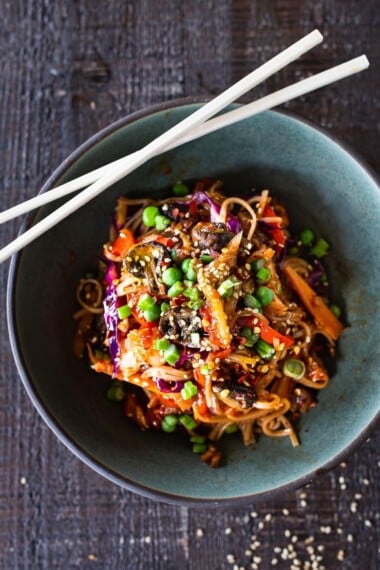
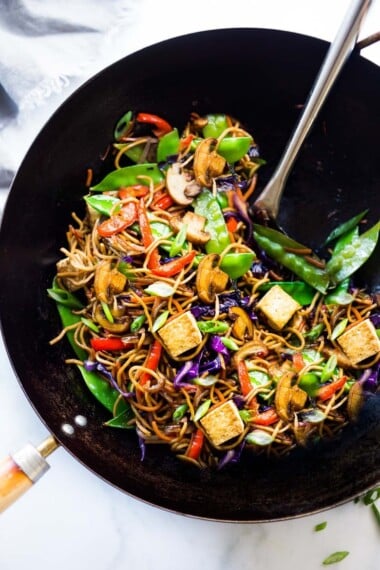
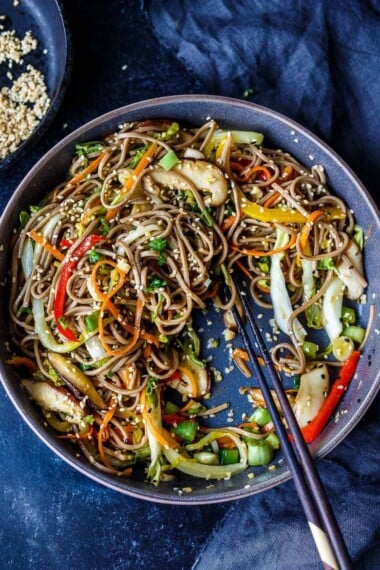
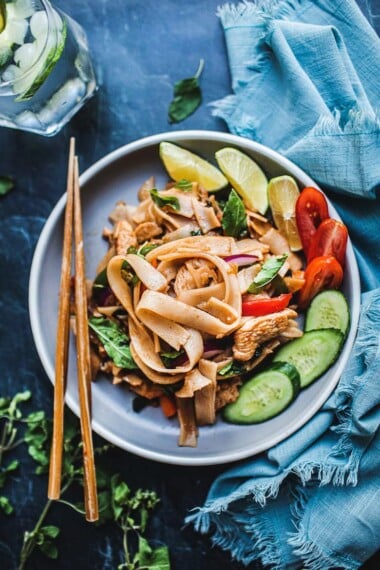
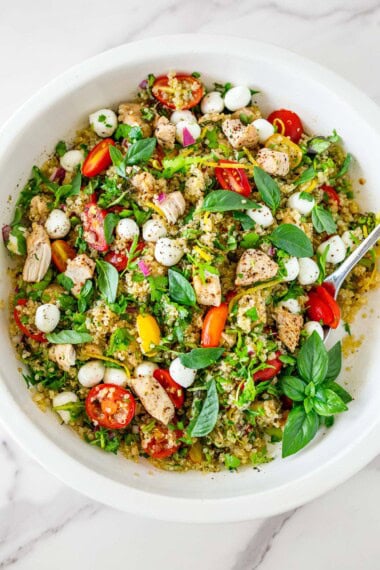
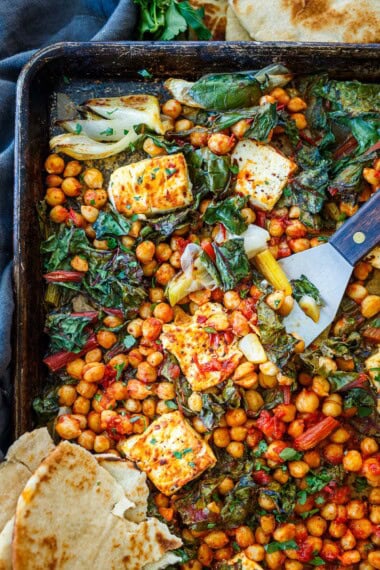
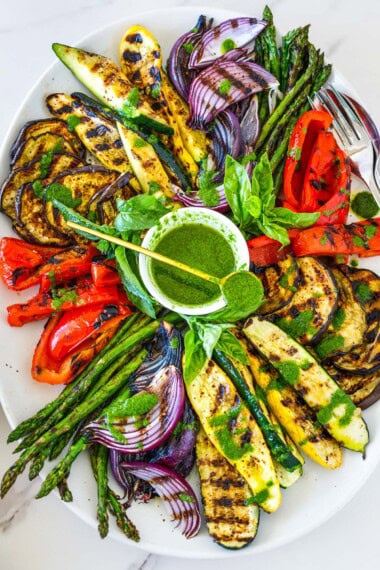



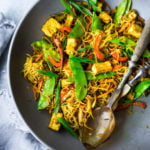
Delicious and quick. Thank you for the many plant based recipes
This is one of my go to recipes for an easy meal. It’s so flavorful and tasty!
Amazing meal!! We thoroughly enjoyed
Thanks for the recipe
This meal turned out great!! Thanks for sharing.
Thanks Ashley!
I’ve tried a few Singapore noodles recipes but this is the keeper! Such authentic flavours and a good amount of spice. Great tip to use less noddles too! Thanks so much Sylvia!
, Loved the meal, fun to make
Yay Roger!!!
So delicious, better than take-out, quick and very easy to make, thank you for sharing!!
Thanks so much happy you liked this!
So so goooood!! I made mine with prawns.
Is this the rice noodles taste you find in an Asian buffet?
I think so?
Absolutely delicious and easy and quick to make
Great recipe, the Singapore noodles were perfect not to dry and not to spicy.
Overall it is a perfect recipe
thanks so much Steve!
We love this recipe and so do our kids! We make it all the time. I want to make a big batch for the upcoming holidays. Do you think it would freeze ok? Thanks for your help.
Hey Erin, great question, and I’m not sure. Has anyone else tried freezing it?
This dish is my go-to dish to order any chance that I get and I was so so happy to have been able to make it at home. My husband also had 2 helpings and really was impressed. I’m eating my leftovers for lunch today and getting compliments of the smell and look from all the office girls. I’m thoroughly impressed with this recipe, thank you so much for sharing.
Great recipe. Cooked this recipe up tonight for my son and friend. Both went back for seconds. Comment was “This tastes pretty good, thanks Mum, they taste just like Singapore Noodles”.
Well that was the recipe ?
Will definitely be making again.
So happy you all liked it! 🙂
Very Good Recipie. Made it on my weekend. Me and a friend ate heaps. We used prawns
This recipe is excellent. You may also use any kind of pasta such as spaghetti or linguine or gluten free versions if you can’t get the rice noodles.
My husband and I love this- it is relatively quick but so delicious and veggie filled. We just got to get our 2 year old on board…. we like it enough to keep trying! Thank you
Great to hear Emily!
Love this recipe! I added chicken instead of tofu and added red pepper flakes instead of the chili peppers. Also, I cooked the egg first and made strips out of it because when I added it to the pot as prescribed here, it got all mushy. But the spices and sauce were delicious- love curry and turmeric together and the final product was just yummy. My husband absolutely raved about it and said, “You’ve got to make this again.” Thank you so much for posting this recipe!
Thanks for your adaptions and so happy you liked it!
Fantastic! What a great recipe. I used mushrooms, red pepper, carrots and cabbage along with the tofu and everyone loved it. Even better today for lunch. I might add some lime juice at the end next time? Thank you!
Delicious, fast and easy. I made it as per the recipe and was impressed with the results! Has a nice spicy kick to it, but not over powering. Great for lunches. Beautiful colors.
So glad you enjoyed this!
Our whole family loved this dish. The flavors were a lovely combination.
Love this recipe — was looking for a bit of a flavor change during the drab winter months and this fit the bill!
Yes, its a good way to mix things up-glad you liked it!
Excellent recipie! Absolutely delicious and the instructotions were so straight forward
Thanks ??
Made this wonderful recipe last weekend. I didn’t use the tofu and just added a few more vegies. My carnivorous husband loved it and had two big helpings, so I didn’t have the opportunity to try leftovers. Loved it!
This was spectacular. Spicy and veggie-heavy and satisfying.
I feel like I’m always in the mood for a curry-flavored dish that’s not actually curry, and it’s so hard to find one, but this really hit the spot. I made it with chicken, bok choy, broccoli and carrots, which was a lovely combination. Definitely appreciated the instructions not to add extra noodles – they really did expand and it was the perfect amount. Also, the tip to snip them in the colander was fantastic.
Thank you very much for this recipe – it’s going into the rotation!
Thanks Claire…. I’m so glad you liked it! Thanks for the comment! xoxo